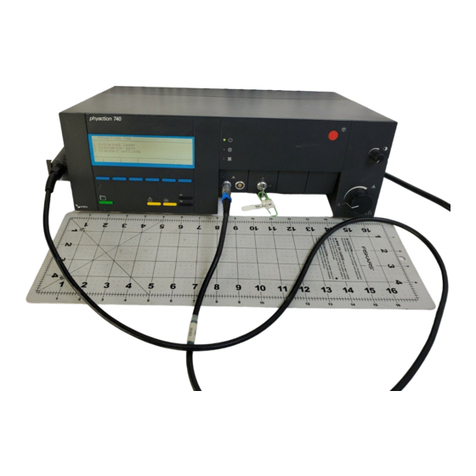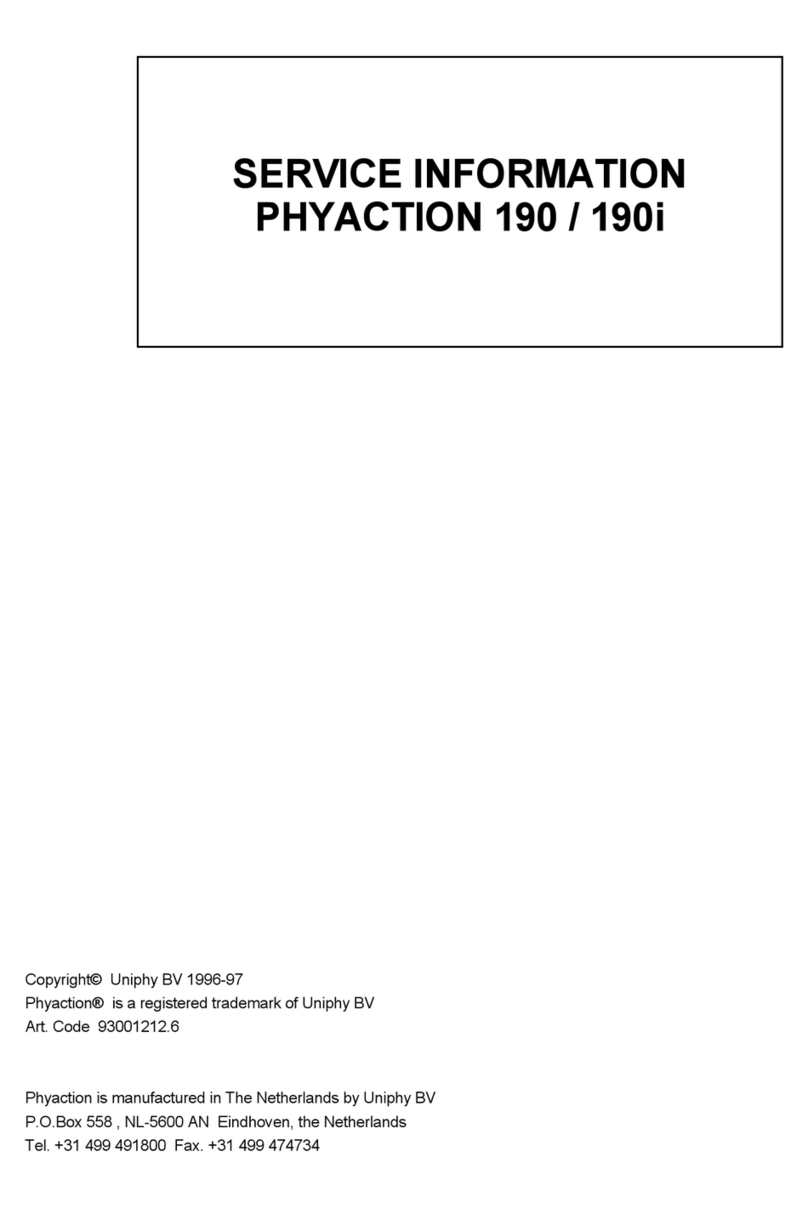
Service manual Phyaction V
Service manual version 0.1 Page 1
1. Contents
1. ............................................................................................................................. 1Contents
2. ............................................................................................................................... 2Preface
3. .............................................................................................................. 3Important remarks
3.1 ................................................................................................................ 3Safety aspects
3.2 .............................................................................................................. 3Data registration
4. .................................................................................................................... 5Technical data
4.1 .................................................................................................... 5General technical data
4.2 ................................................................................................ 5Environmental conditions
4.3 .................................................................................................... 5Transport and storage
5. ............................................................................................................... 6Circuit description
5.1 .................................................................................................................. 6Power supply
5.2 .................................................................................................. 6Patient Current Routing
5.3 ........................................................................................................................... 6Vacuum
5.3.1 ............................................................................................................ 6Control Loop
5.3.2 ........................................................................................................ 6Pulsed Vacuum
5.3.3 ..................................................................................................... 7End of Treatment
5.3.4 ................................................................................................. 7Water management
6. ............................................................................ 8Safety inspection list ( yearly check-up )
7. ................................................................................................................. 9Hardware labels.
7.1 ....................................................................................... 9Upgrading the hardware code.
8. ................................................................................................. 10Replacement procedures
8.1 ............................................................................................................ 10Opening the unit
8.2 .............................................................................. 11Replacement of power supply PCB
8.3 ..................................................................................... 11Replacement of the Main PCB
9. .......................................................................................................................... 12Upgrades
9.1 .................... 12Vacuum pump switches of after 2 minutes even when current is flowing
10. .................................................................................................................. 13Spare parts list
11. ............................................................................................. 13Schematics and PCB layout





























